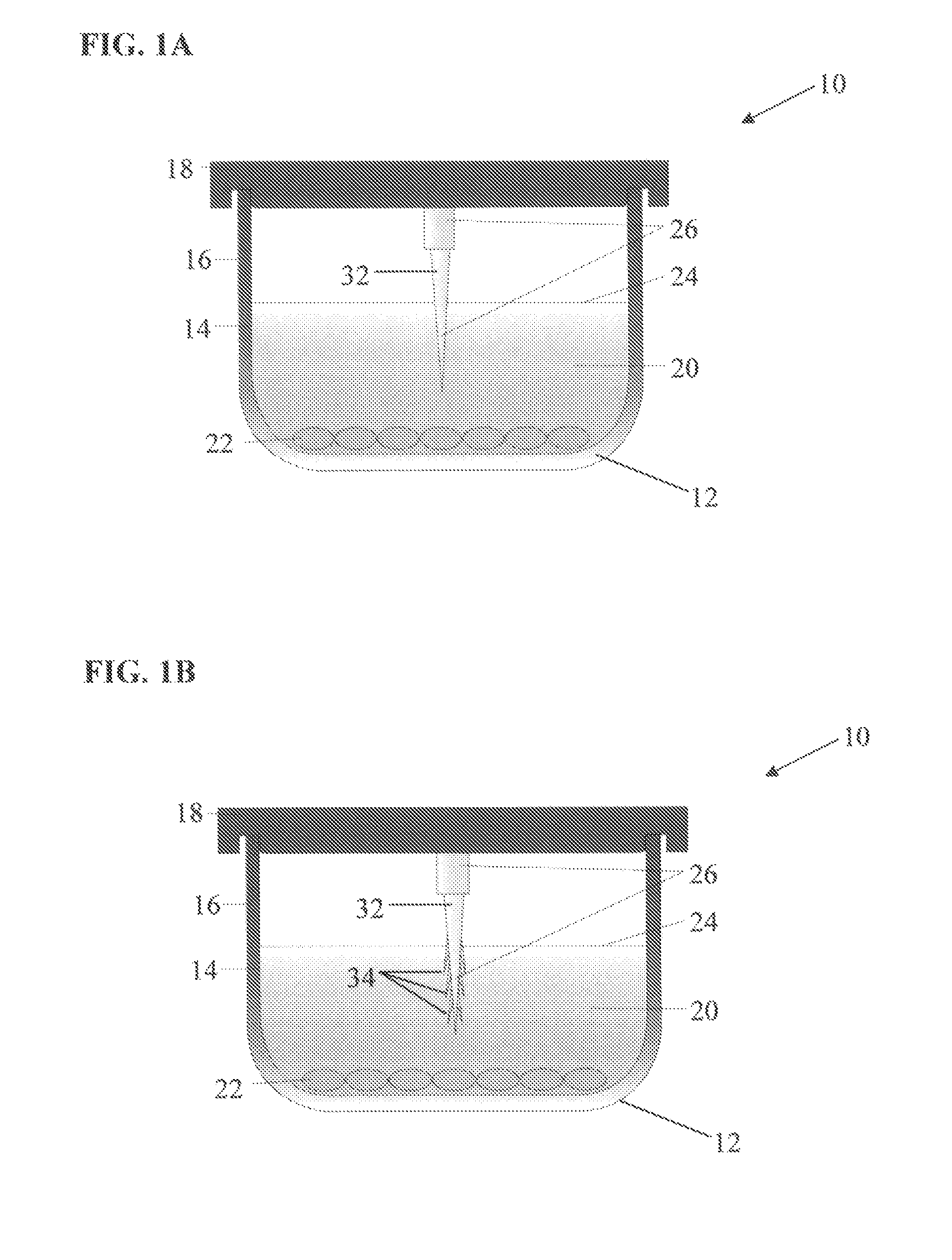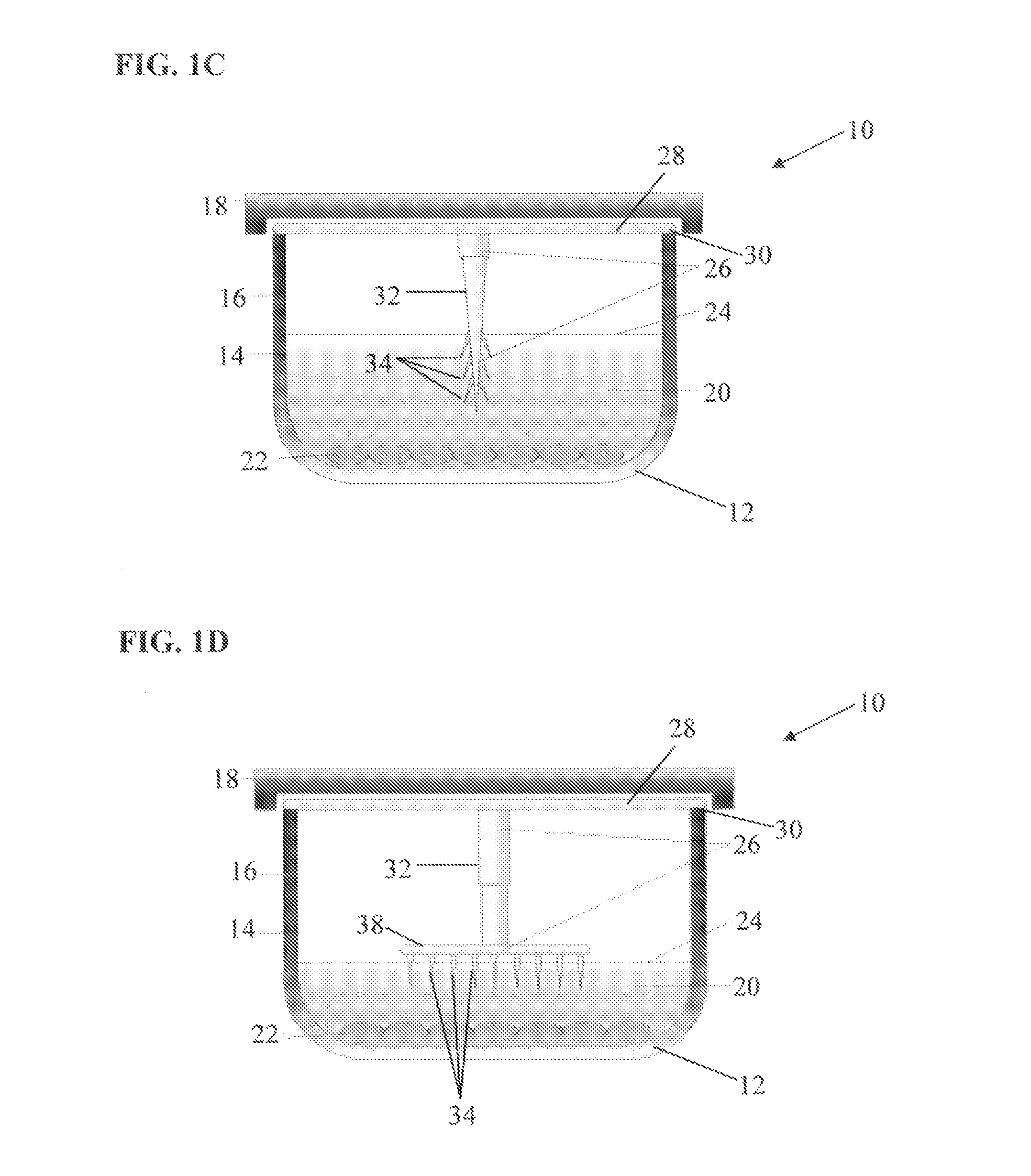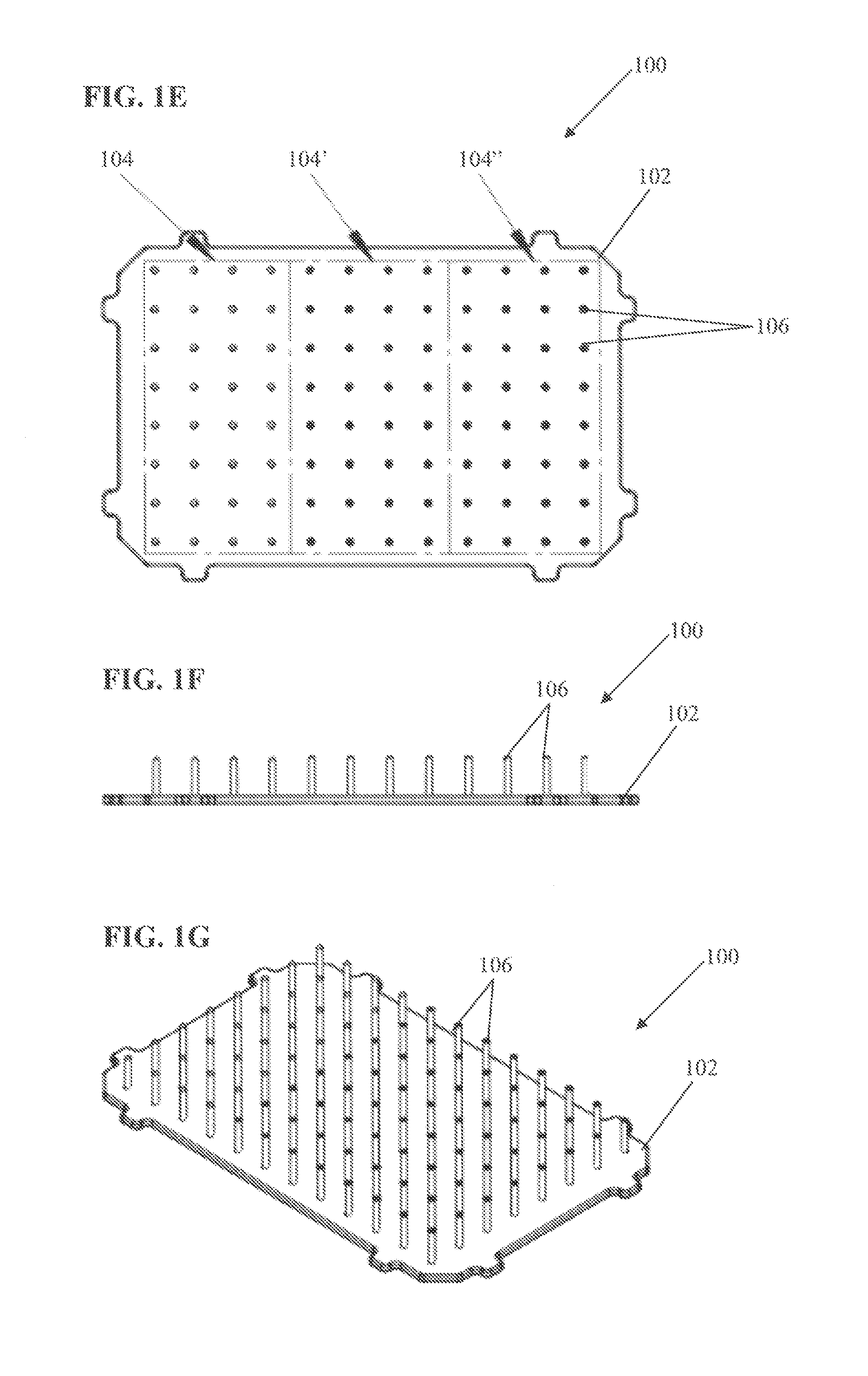Apparatuses and compositions for cryopreservation of cellular monolayers
a cell monolayer and apparatus technology, applied in the field of apparatuses and compositions for cryopreservation of cellular monolayers, can solve the problems of increasing cell loss, significant number of cells still lost to cell death, and current methods are insufficient for effective large-scale cryopreservation of cell samples and tissues in a multi-vessel format, so as to improve the integrity, viability, recovery and shelf life, and reduce the variability of wells. to wells
- Summary
- Abstract
- Description
- Claims
- Application Information
AI Technical Summary
Benefits of technology
Problems solved by technology
Method used
Image
Examples
example 1
Cooling profile of interior and exterior wells of a 96-well plates and the effects of an insulating material.
[0094]In this example, 96-well tissue culture plates were used to investigate the differences in cooling rate between interior and exterior wells and the efficacy of including an insulating material. For this example, the insulating material was applied to the outer underside edge of the exterior wells as demonstrated in FIG. 2A. To insulate plates, standard clear acrylic latex caulk plus silicone was applied to the underside exterior wells of the 96-well tissue culture plates previously described. Caulk was applied into the outside gap found between the exterior wells and the outer plate edge of the tissue culture plates (see FIG. 2A). Caulk was applied with a standard caulk gun. The caulk was added to the exterior well gaps until any obvious air space was filled. The excess caulk was wiped away and leveled off so that the caulk insulating layer was flush with the plate well...
example 2
Freezing of NHDF cell monolayers in 96-well plate testing different cryopreservation media and freezing methods
[0097]In this example, different cryopreservation media were investigated as models to cryopreserve NHDF, normal human dermal fibroblast, cell monolayers in multiwell plates following three separate freezing methods. NHDF cells were cultured and subsequently plated at an equal number of cells / well in a 96-well culture plate (BD Falcon). The cultures were left undisturbed for one day to achieve confluent attached cell monolayers. Prior to preparing the cultures for preservation, an initial assessment of the metabolic activity was performed to determine cell viability prior to freezing. alamarBlue® (TREK Diagnostic Systems) was utilized to assess cell viability.
[0098]alamarBlue® is soluble, stable in culture medium and is non-toxic. The continuous monitoring of cells in culture is therefore permitted. Specifically, alamarBlue® does not alter the viability of cells cultured fo...
example 3
Freezing of NHDF cell monolayers in 96-well plate testing efficacy and variability of CRYOSTOR™ CS5 cryopreservation media combined with or without an ice nucleating device
[0105]In this example, an ice nucleating device as described in FIG. 1 was developed and utilized to determine device utility and efficacy compared to having no ice nucleating device. For the provided examples demonstrated in FIGS. 6-9, the ice nucleating device is essentially as described in FIG. 1. The ice nucleating device was prepared from the same material as the 96-well tissue culture plates (BD Biosciences, Billerica, Mass.). Each device was cut from the culture plate material using a razor blade to a length of about 8 cm and a width of about 1 cm (the exact width and length varied slightly for each device). The devices were rectangular in shape and did not have a single pointed end. The edges were rough, resembling multiple ice nucleating points. Once the individual ice nucleating devices were prepared, a ...
PUM
| Property | Measurement | Unit |
|---|---|---|
| temperature | aaaaa | aaaaa |
| thickness | aaaaa | aaaaa |
| thickness | aaaaa | aaaaa |
Abstract
Description
Claims
Application Information
 Login to View More
Login to View More - R&D
- Intellectual Property
- Life Sciences
- Materials
- Tech Scout
- Unparalleled Data Quality
- Higher Quality Content
- 60% Fewer Hallucinations
Browse by: Latest US Patents, China's latest patents, Technical Efficacy Thesaurus, Application Domain, Technology Topic, Popular Technical Reports.
© 2025 PatSnap. All rights reserved.Legal|Privacy policy|Modern Slavery Act Transparency Statement|Sitemap|About US| Contact US: help@patsnap.com



